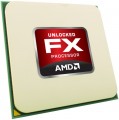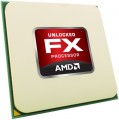In box
This parameter does not so much indicate the difference in technical characteristics as it describes the packaging and computer Hardware.
-
OEM. The tray package, or OEM, provides that the processor is supplied without a cooling system (CO) and without a branded box - the packaging is usually a simple antistatic bag. You need to select and install cooling for such a CPU separately. In addition, components in tray packaging often have a shorter warranty period than in the box version, and their additional equipment is more meager. On the other hand, such solutions are noticeably cheaper, and the absence of CO allows you to select it separately, without relying on the manufacturer’s choice.
—
BOX (without cooler). Processors packed in branded boxes, but not equipped with cooling systems (CO). Such packaging is more expensive than OEM, but the warranty period for “boxed” chips is usually much longer (for example, three years instead of one). The absence of a cooler, on the one hand, requires additional efforts to find and install a coolant; on the other hand, cooling can be selected according to your own criteria, without relying on the manufacturer’s choice. However, it is worth considering that when installing a cooler yourself, it is difficult to achieve the same efficiency from it as with a factory installation; This is especially critical if the CPU is planned to be intensively overc
...locked; for such modes it is better to choose a box package with a cooler.
— BOX (with cooler). Processors packed in branded boxes and equipped with cooling systems (CO). Box packaging itself is more expensive than OEM, but this is compensated by a number of advantages - in particular, more extensive packaging and a longer warranty period. As for the presence of a cooler in the kit, it further increases the overall cost of the CPU, but eliminates the need to bother with the selection and installation of a separate cooling system. It is worth noting that the factory installation of CO allows you to achieve higher efficiency than independent installation, so for high loads (including overclocking) this particular configuration option is best suited. On the other hand, before purchasing, you need to check whether there is enough space in the case for a cooler: complete coolers can be quite bulky, and removing them can be difficult.
— MPK (with cooler, without box). The multipack package, or MPK for short, implies the delivery of a processor with a standard boxed cooling cooler, but without a box and accompanying documentation. The processor is usually packaged in a simple antistatic bag. The MPK package is more expensive than OEM due to the presence of a cooling system, but cheaper than BOX (with cooler) due to the absence of a box. At the same time, the multipack kit usually has a shorter warranty period than the BOX delivery option (with a cooler).Cores
The number of physical cores provided in the processor design. The core is the part of the processor that is responsible for executing the instruction stream. The presence of multiple cores allows the CPU to work simultaneously with several tasks, which has a positive effect on performance. Initially, each physical core was intended to operate with one thread of commands, and the number of threads corresponded to the number of cores. However, today there are many processors that support multi-threading technologies and are capable of executing two streams of commands on each core at once. For more information about this, see “Amount of threads”.
Desktop processors
have 2 cores (2 threads), as a rule, typical for budget models.
2 cores (4 threads) and
4 cores are typical for inexpensive mid-class solutions.
4 cores (8 threads),
6 cores,
6 cores (12 threads),
8 cores - a strong mid-range.
8 cores (16 threads),
10 cores,
12 cores,
16 cores and
more are characteristic features of advanced models, including processors for servers and workstations.
At the same ti
...me, it is worth considering that the actual capabilities of the CPU are determined not only by this parameter, but also by other characteristics - primarily by series and generation / architecture (see the corresponding paragraphs). It is not uncommon for situations where a more advanced and/or new dual-core processor turns out to be more powerful than a quad-core chip from a more modest series or an earlier architecture. So it makes sense to compare CPUs by the number of cores within the same series and generation.Threads
The number of instruction streams that the processor can execute at the same time.
Initially, each physical core (see "Number of cores") was intended to execute one thread of instructions, and the number of threads corresponded to the number of cores. However, there are many processors today that support Hyper-threading or SMT (see below) and can run two threads on each core at once. In such models, the number of threads is twice the number of cores — for example, 8 threads will be indicated in a quad-core chip.
In general, a higher number of threads, other things being equal, has a positive effect on speed and efficiency, but increases the cost of the processor.
Clock speed
The number of cycles per second that the processor produces in its normal operating mode. A clock is a single electrical impulse used to process data and synchronize the processor with the rest of the computer system. Different operations may require fractions of a clock or several clocks, but anyway, the clock frequency is one of the main parameters characterizing the performance and speed of the processor — all other things being equal, a processor with a higher clock frequency will work faster and better cope with significant loads. At the same time, it should be taken into account that the actual performance of the chip is determined not only by the clock frequency, but also by a number of other characteristics — from the series and architecture (see the relevant paragraphs) to the number of cores and support for special instructions. So it makes sense to compare by clock frequency only chips with similar characteristics belonging to the same series and generation.
L1 cache
The amount of Level 1 (L1) cache provided by the processor.
Cache is an intermediate memory buffer into which the most frequently used data from RAM is written when the processor is running. This speeds up access to them and has a positive effect on system performance. The larger the cache, the more data can be stored in it for quick access and the higher the performance. Level 1 cache has the highest performance and the smallest volume — up to 128 KB. It is an integral part of any processor.
L2 cache
The amount of Level 2 (L2) cache provided by the processor.
Cache is an intermediate memory buffer into which the most frequently used data from RAM is written during processor operation. This speeds up access to them and has a positive effect on system performance. The larger the cache, the more data can be stored in it for quick access and the higher the performance. Level 2 cache volume can reach 12 MB, the vast majority of modern processors have such a cache.
Max. operating temperature
The maximum temperature at which the processor is able to effectively continue to work — when heated above this temperature, most modern processors are turned off in order to avoid the unpleasant consequences of overheating (up to the burning of the chip). The higher the maximum operating temperature, the less demanding the processor is on the cooling system, however, the cooling power anyway should not be lower than TDP (see Heat Dissipation (TDP)).

